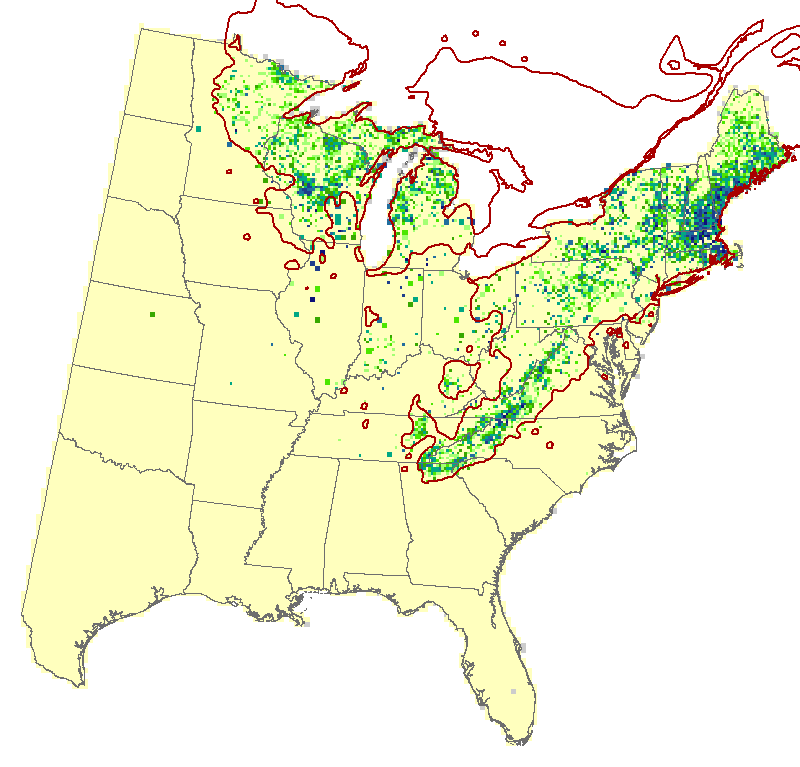eastern white pine (Pinus strobus)
Model Reliability: High
| GCM SCENARIO | % Area Occ | Ave IV | Sum IV | Future/Current IV |
|---|---|---|---|---|
| Actual | 14 | 10.6 | 43473 | N/A |
| RFimp | 20.5 | 6.4 | 38666 | 0.89 |
| CCSM45 | 26.7 | 5.7 | 44688 | 1.16 |
| CCSM85 | 26 | 5.4 | 41077 | 1.06 |
| GFDL45 | 26.9 | 5.4 | 42323 | 1.09 |
| GFDL85 | 23.8 | 4.8 | 33853 | 0.88 |
| HAD45 | 25.6 | 5.4 | 40746 | 1.05 |
| HAD85 | 22.2 | 4.8 | 31097 | 0.8 |
| GCM45 | 28.8 | 5 | 42643 | 1.1 |
| GCM85 | 26.2 | 4.6 | 35373 | 0.91 |
Regional Summary Tree Tables
Summaries for tree species are available for a variety of geographies, in both PDF and Excel format. These summaries are based on Version 4 of the Climate Change Tree Atlas
Interpretation Guide
Eastern white pine is an widely distributed (10.6% of area), dense, and high importance northern pine with little modeled change in suitable habitat by 2100. It does, however, suffer from some negative traits (e.g., susceptibility to drought, fire, and insects) which drops it to low adaptability. Because of its high current abundance, we upgrade its capacity to cope to fair. SHIFT shows good infill.
Family: Pinaceae
Guild: opportunistic, long-lived intermediate
Functional Lifeform: large evergreen conifer
| 3.3 | -1.97 |
| 0.13 |  |
MODFACs
What traits will impact eastern white pine's ability to adapt to climate change, and in what way?:
Primary Positive Traits
Dispersal
Primary Negative Traits
Drought Fire topkill Insect pests



